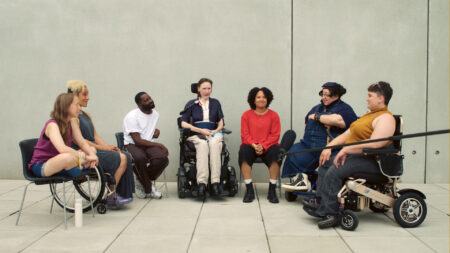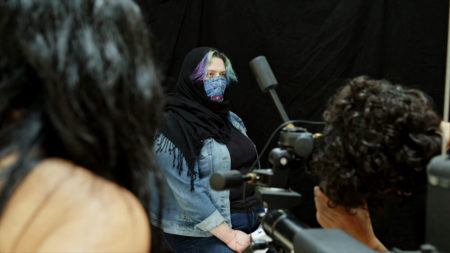Introducing the first half of this year’s new Art21 Educators cohort—each bringing a passion for contemporary art in the classroom to Year 8 of the program, which kicks off tomorrow with the annual Summer Institute in New York City.
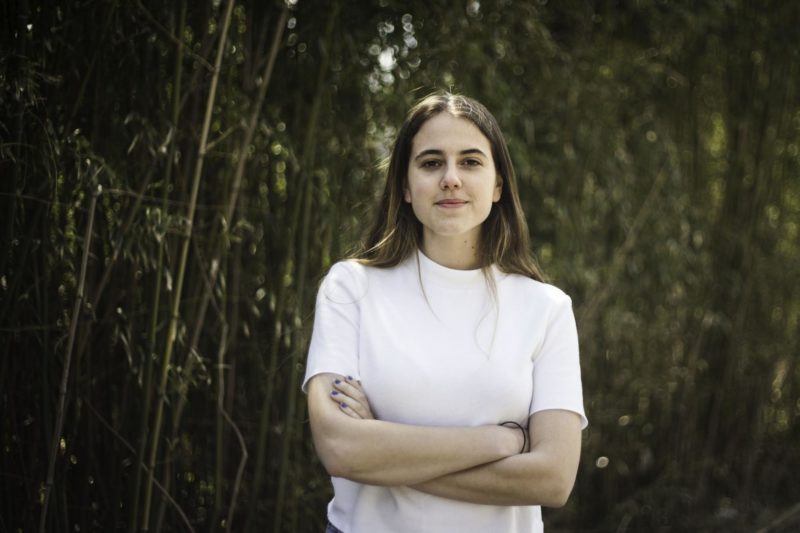
Ariana Mygatt teaches studio art at Parkville High School in Baltimore, Maryland. She also serves as the Senior Art Director of Womanly Magazine, a health- and art-focused publication that educates women and non-binary individuals from underserved populations on important topics related to health and well-being.
In her photo classes, she teaches students exposure techniques in the darkroom and asks them to develop a final project around the theme of home. “Upon completing, reflecting upon, and sharing their portfolios with their classmates, I wanted students to understand their own homes in the context of their community, see similarities and differences alike,” she said, “make connections with each others’ experiences, and ultimately open them up to a wider understanding of what home can mean, and what a home can be.”
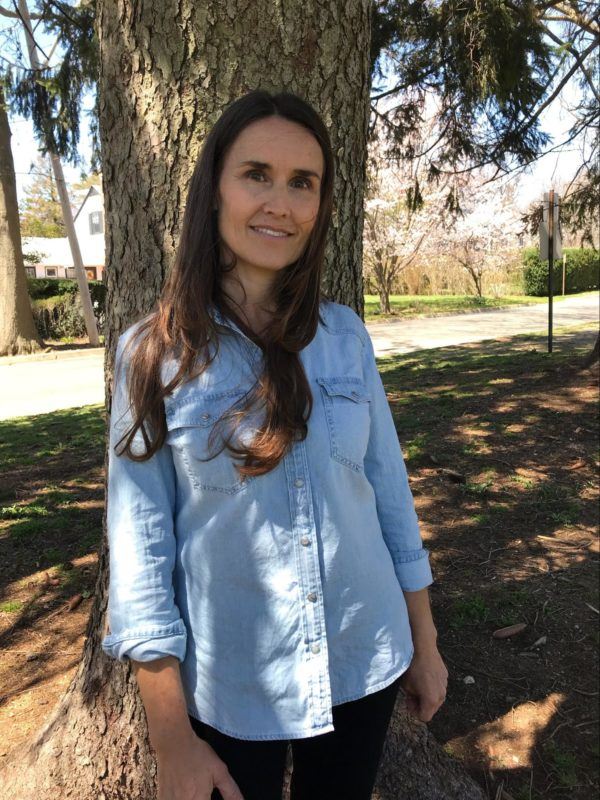 Miranda Best has taught studio art for nearly two decades at Paul D. Schreiber High School in Sea Cliff, New York. Her first Art21 experience happened over ten years ago when a colleague showed Cai Guo-Qiang’s Season 3 segment at an art department meeting: “Shortly after I saw the video, I visited Cai Guo-Qiang’s exhibition at the Metropolitan Museum of Art. The work was powerful and the Art21 segment had given me a basis for deeper understanding and appreciation of the work.”
Miranda Best has taught studio art for nearly two decades at Paul D. Schreiber High School in Sea Cliff, New York. Her first Art21 experience happened over ten years ago when a colleague showed Cai Guo-Qiang’s Season 3 segment at an art department meeting: “Shortly after I saw the video, I visited Cai Guo-Qiang’s exhibition at the Metropolitan Museum of Art. The work was powerful and the Art21 segment had given me a basis for deeper understanding and appreciation of the work.”
Reaching over 100 students each year, Miranda believes meaningful art engages directly with the time in which it’s made. “Using contemporary art and artists in the classroom is an essential piece of my approach to working with high school students,” she said. “Contemporary art helps me introduce topics that teenagers are intrinsically drawn to in a way that has substance, yet is open enough to allow for multiple viewpoints.”
 Jonathan Dueck teaches art and technology classes to junior high school students at Isaac Brock School in Winnipeg, Manitoba. He found his art students were off to a rocky start this year, so Jonathan scrapped his plans for the class. Similar to Art21 Educator alumnus Todd Elkin’s “Assessment as Dialogue” curriculum, Jonathan and his students came up with a new curriculum together, identifying three major themes to address throughout the semester.
Jonathan Dueck teaches art and technology classes to junior high school students at Isaac Brock School in Winnipeg, Manitoba. He found his art students were off to a rocky start this year, so Jonathan scrapped his plans for the class. Similar to Art21 Educator alumnus Todd Elkin’s “Assessment as Dialogue” curriculum, Jonathan and his students came up with a new curriculum together, identifying three major themes to address throughout the semester.
“What I felt most satisfied with was that for a time, these students went from negative self-defeating individuals towards a positive and sharing community,” he said. “I have always held teaching with contemporary art dear to my heart ever since I have started teaching in a public school setting. In so many art programs students come away with the impression that art stopped being made after Andy Warhol painted his soup cans.”
 Rebecca Brown teaches art to middle and high schoolers at Kensington Woods Schools in Wixom, Michigan. “To me, contemporary art unpacks assumptions and the context around one’s own experiences,” she said. This year, after realizing her high school students weren’t connecting to the guided curriculum she had planned, she scaled back to focus solely on the studio process and found her students really connected with artists Eddie Martinez, Katharina Grosse, and Tala Madani.
Rebecca Brown teaches art to middle and high schoolers at Kensington Woods Schools in Wixom, Michigan. “To me, contemporary art unpacks assumptions and the context around one’s own experiences,” she said. This year, after realizing her high school students weren’t connecting to the guided curriculum she had planned, she scaled back to focus solely on the studio process and found her students really connected with artists Eddie Martinez, Katharina Grosse, and Tala Madani.
“These three inspired my students to create for the love of an element, like color, or simply for the love of the physical process,” she said. “Once that door opened, we were able to explore a deeper layering of context and history in artwork with complete enthusiasm. These three are now our ‘gateway’ artists.”
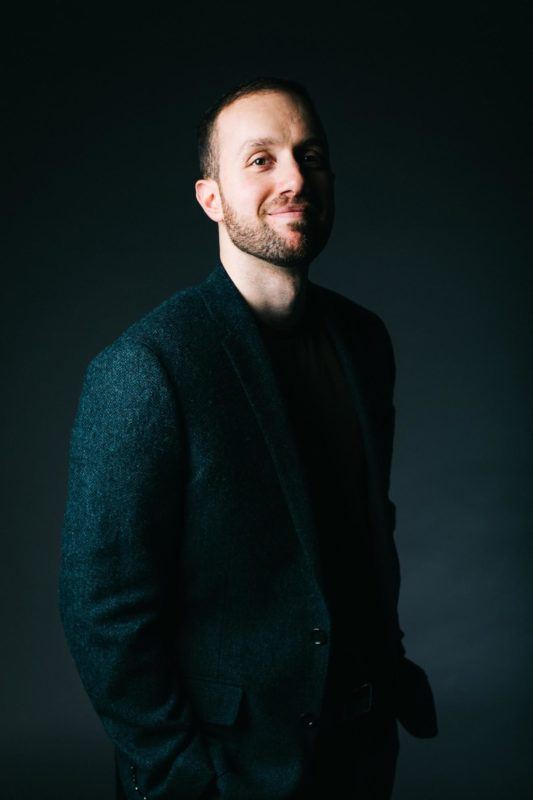 Daniel Mendel teaches art and English to high schoolers at Avenues: The World School in Manhattan. With his school within walking distance to many West Side art galleries and the Whitney Museum, he’s frequently able to take students to these vital spaces of cultural engagement. He recently built a unit of study around two exhibitions at the Whitney that asked students to consider the question: “What makes a story ‘American’ and who gets to decide?”
Daniel Mendel teaches art and English to high schoolers at Avenues: The World School in Manhattan. With his school within walking distance to many West Side art galleries and the Whitney Museum, he’s frequently able to take students to these vital spaces of cultural engagement. He recently built a unit of study around two exhibitions at the Whitney that asked students to consider the question: “What makes a story ‘American’ and who gets to decide?”
“Contemporary art is work that is fresh in its response to sociopolitical factors. It is also work that upends the reductiveness of that definition,” he said. “I want to present my students with fresh responses to current realities. I am eager to help them understand the present and prepare for the future. Otherwise, I feel that I am failing them.”
